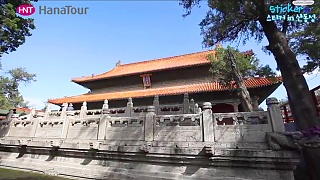
|
Day Trips from Shenzhen, China
Guangzhou 广州 (Guǎngzhōu): Explore the vibrant capital of Guangdong Province, known for its rich history, delicious Cantonese cuisine, and modern skyscrapers. Visit iconic landmarks such as the Canton Tower, stroll along the historic Shamian Island, and sample local delicacies at the bustling Shangxiajiu Pedestrian Street.
Hong Kong 香港 (Xiānggǎng): Experience the dynamic cityscape of Hong Kong, just a short train ride away from Shenzhen. Explore attractions like Victoria Harbour, ride the Peak Tram to Victoria Peak for stunning city views, and indulge in shopping and dining in areas like Causeway Bay and Tsim Sha Tsui.
Macau 澳门 (Àomén): Discover the unique blend of Portuguese and Chinese culture in Macau, known for its historic colonial architecture, vibrant casinos, and delicious egg tarts. Visit iconic landmarks such as the Ruins of St. Paul's, explore the historic streets of Senado Square, and try your luck at the famous casinos along the Cotai Strip.
Dameisha Beach and Xiaomeisha Beach 大梅沙海滨公园 (Dàméishā Hǎibīn Gōngyuán) and 小梅沙海滨公园 (Xiǎoméishā Hǎibīn Gōngyuán): Relax and unwind at Dameisha and Xiaomeisha Beaches, popular seaside destinations located just outside of Shenzhen. Enjoy sunbathing on the golden sands, swimming in the clear waters of the South China Sea, and participating in water sports such as jet skiing and parasailing.
Window of the World 世界之窗 (Shìjiè zhī Chuāng): Immerse yourself in a world of wonders at Window of the World, an amusement park in Shenzhen that features miniature replicas of famous landmarks from around the globe. Explore iconic sites such as the Eiffel Tower, the Taj Mahal, and the Great Wall of China, all within a single day.
Shenzhen Safari Park 深圳野生动物园 (Shēnzhèn Yěshēng Dòngwùyuán): Get up close and personal with wildlife from around the world at Shenzhen Safari Park. Explore the park's vast grounds by tram or on foot, and encounter animals such as giant pandas, giraffes, and lions in naturalistic habitats.
Fairy Lake Botanical Garden 仙湖植物园 (Xiānhú Zhíwùyuán): Escape the hustle and bustle of the city and immerse yourself in nature at Fairy Lake Botanical Garden. Explore lush gardens, serene lakes, and scenic hiking trails, and discover a diverse collection of plant species from China and around the world.
Shekou Sea World 蛇口海上世界 (Shékǒu Hǎishàng Shìjiè): Spend a day exploring the attractions of Shekou Sea World, a waterfront entertainment complex in Shenzhen. Visit the Sea World Culture and Arts Center, enjoy shopping and dining at the Sea World Plaza, and discover marine life at the Sea World Aquarium.
Shenzhen Museum 深圳博物馆 (Shēnzhèn Bówùguǎn): Dive into the history and culture of Shenzhen at the Shenzhen Museum. Explore fascinating exhibits on the city's evolution from a fishing village to a modern metropolis, learn about the region's archaeological treasures, and discover the cultural heritage of the local Hakka ethnic minority.
Da Fen Oil Painting Village 大芬油画村 (Dà Fēn Yóuhuà Cūn): Discover the vibrant arts scene of Shenzhen at Da Fen Oil Painting Village, a community known for its talented artists and galleries. Watch artists at work in their studios, browse a wide range of original paintings and artworks, and purchase unique souvenirs to take home.
Day Trip to Dongguan 东莞 (Dōngguǎn): Explore the nearby city of Dongguan, known for its manufacturing industry, cultural heritage, and natural attractions. Visit landmarks such as the Keyuan Garden, learn about traditional Cantonese opera at the Qifeng Park Opera Stage, and enjoy shopping at the bustling Dongguan Walking Street.
Day Trip to Huizhou 惠州 (Huìzhōu): Discover the historic city of Huizhou, located along the Pearl River Delta and known for its ancient landmarks, scenic landscapes, and cultural heritage. Visit attractions such as the Luofu Mountain, explore ancient villages like Xingfu Village, and relax on the sandy shores of Xunliao Bay.
Day Trip to Dongguan 东莞 (Dōngguǎn): Explore the nearby city of Dongguan, known for its manufacturing industry, cultural heritage, and natural attractions. Visit landmarks such as the Keyuan Garden, learn about traditional Cantonese opera at the Qifeng Park Opera Stage, and enjoy shopping at the bustling Dongguan Walking Street.
Day Trip to Foshan 佛山 (Fóshān): Visit the historic city of Foshan, known for its centuries-old martial arts traditions, ancient temples, and traditional Cantonese culture. Explore attractions such as the Foshan Ancestral Temple, watch a demonstration of traditional lion dancing at the Foshan Lion Dance Museum, and visit the Nanfeng Ancient Kiln for a glimpse into the region's ceramic heritage.
Day Trip to Zhuhai 珠海 (Zhūhǎi): Discover the coastal city of Zhuhai, located on the Pearl River Delta and known for its beautiful beaches, lush parks, and vibrant cultural scene. Visit attractions such as the New Yuanming Palace, stroll along Lover's Road for panoramic views of the coastline, and enjoy fresh seafood at the bustling Gongbei Seafood Street.
|






 The ancient capital, Xi’An 西安
The ancient capital, Xi’An 西安




